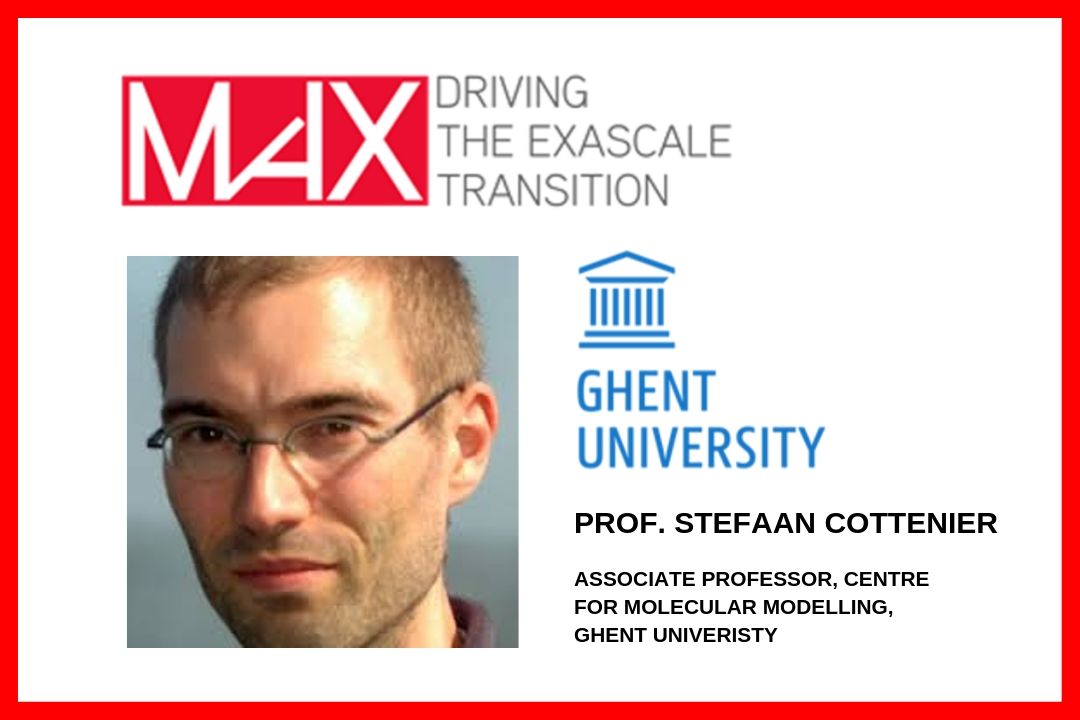On the path to materials design and beyond eXascale: Prof. Nicola Marzari on MaX
Prof. Nicola Marzari holds the Chair of Theory and Simulation of Materials at EPFL, where he is also the director of the Swiss National Centre for Competence in Research on Computational Design and Discovery of Novel Materials (NCCR MARVEL).
He is also the elected (Dec 2017) Chairman of PSI-k. Previous tenured appointments include the first University (“Statutory”) Chair of Materials Modelling at the University of Oxford (UK), and the Toyota Chair for Materials Engineering at the Massachusetts Institute of Technology (Cambridge, MA).
The EU partnership project entitled: MaX - “MAterials design at the eXascale, European Centre of Excellence in materials modelling, simulations, and design” was officially launched on its Kick-off Meeting which happened last 13 to 14 of December 2018 in Modena, Italy. MaX sits in prime position, together with another nine, recently-launched, highly-motivated Centres of Excellences (CoE), operating in the field of High-Performance Computing (HPC), High Throughput Computing (HTC) and High-Performance Data analysis (HPDA).
The added value that MaX brought to the HPC and Materials Modelling community
During the first 3 years, MaX has really put together the community of simulation experts and materials modelling but also the high-performance computer experts in all the supercomputing centres around Europe. This builds the infrastructure that really empowers, not only this dreamer but this reality, of being able to do simulations of properties of materials that are very important for society in a massive high throughput mode. And, improved access to computing applications and expertise that enables researchers and industry to be more productive, leading to scientific excellence, discovery and economic and social benefit.
MaX lead the transition to (and beyond) Exascale technologies
The MaX strategy will allow building capacity, competence and services that can be transitioned to large and small enterprises, and to other research and academic communities, fostering the entire HPC ecosystem in Europe and reducing the costs and barriers preventing its full exploitation. The achievement of the main goal will be carried out by implementing four key-actions:
1. Restructure MAX flagship codes towards exascale and extreme scaling performance, in order to address frontier scientific, industrial or societal challenges.
2. Co-design activities to ensure that future HPC architectures are well-suited for the applications and their users, providing them with high performance and scalable application base.
3. Develop a broader ecosystem enabling the convergence of HPC, HTC and HPDA.
4. Widen the access to codes and foster transfer of know-how to user communities.
MaX and synergies with the European Open Science Cloud (EOSC)
MaX, in the context of the European Open Science Cloud- EOSC, the European Commission initiative that looks to reinforce Open Science, Open Innovation and Open to the world policies, is looking to synergise with the developments taking place on EOSC in these months, as currently the project offers simulation data and services, in the true spirit of open science, by allowing to run open-source simulation codes on the cloud, supercomputing centres, and local resources (deploying virtual machines).
This is really part of a drive all over the continent for open science so everything that we do is done with an open-source tool everyone can download and use with open access data and cloud services that we deliver and starts to be mirrored in the broader European initiatives.



